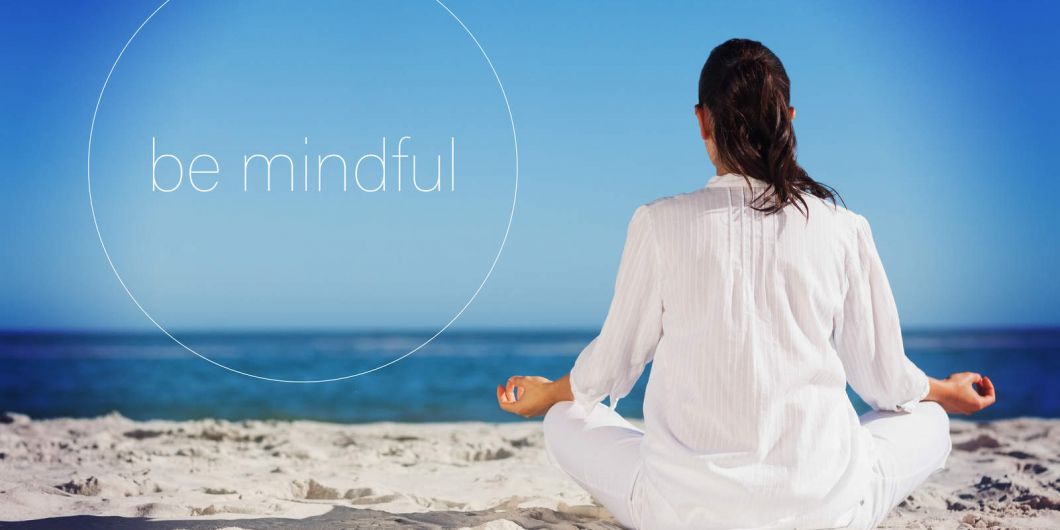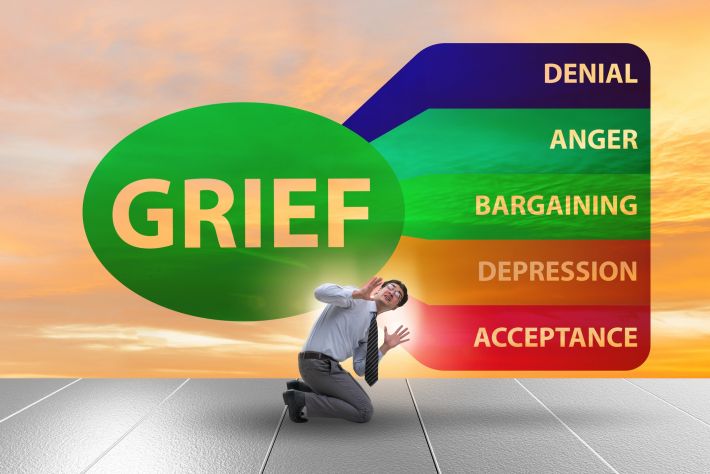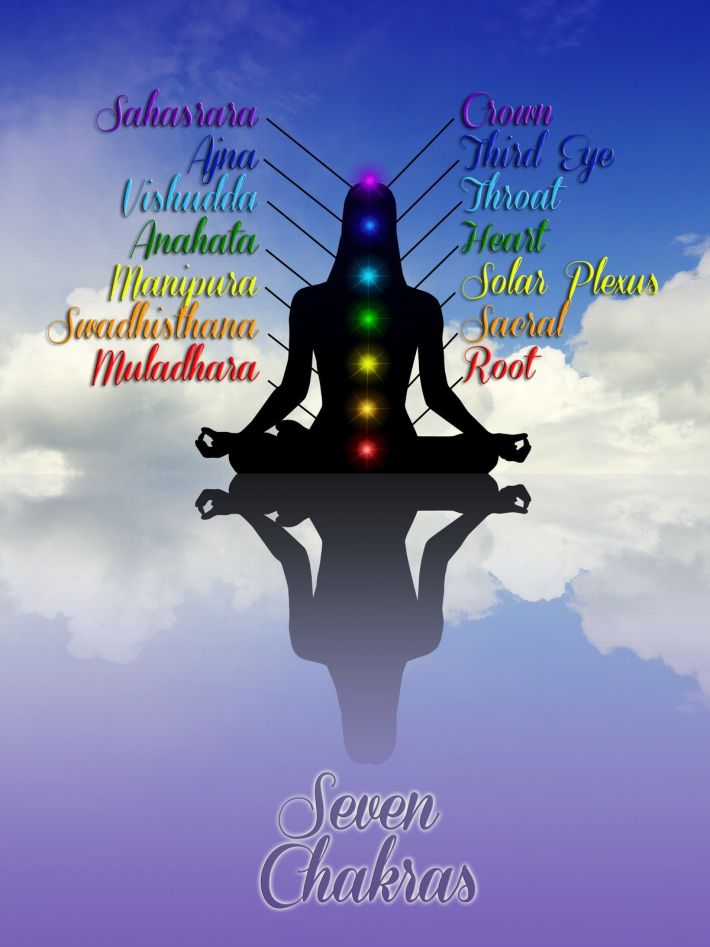- in Meditation , Mindfulness by Tony
- |
- 2 comments
Mindfulness and Meditation, companions on your journey throughout life.

Mindful Meditation is an excellent place to begin your journey into self-discovery. The quality of your thoughts determines the quality of your life. Meditation is one of the simplest ways to start practising mindfulness.
More...
According to Headspace, mindfulness is ‘The quality of being present and fully engaged with whatever we’re doing at the moment — free from distraction or judgment, and aware of our thoughts and feelings without getting caught up in them.’
- Headspace -
In Meditation: We take ourselves away from everyday activity for three, five, 10 minutes or however long and become more familiar and confident in being present.
Meditation
You don’t need to listen to apps or read books. Just find somewhere that is not too noisy or filled with other people and then sit calmly. Somewhere that you feel relaxed and will not be disturbed.
Don’t worry about the lotus position/a mantra/what you may, or may not, be wearing.
• Set a timer for five minutes.
• Sit with your back straight and upright (but not uptight). Your hands can be clasped or resting on your legs -whatever feels comfortable to you.
• Close your eyes. Start by paying attention to the sensations of your breath - the sensations of the air moving in and out of your body.
• Find the spot where you feel the breath most clearly and allow your attention to rest there. You may feel it most strongly at the nostrils, the belly or the throat.
• Feel the breath as it enters and leaves the body at this spot. See if you can feel it through the inhale and through the exhale as it happens each time.
• If at any moment you notice that your attention has wandered away from the breath, gently bring back your focus to the breath and resume. Focus on one area to recognise when you have been distracted. Every time you are distracted, return to the point of focus.
• When the timer goes off, open your eyes. It’s that simple.
Don't expect anything to happen
Mindfulness is not a magic cure-all approach that makes our problems vanish. If Meditation is not practised correctly, it can be a waste of time. No one said Meditation was going to be easy.
Many individuals get frustrated at their lack of progress and become impatient, which is the opposite of staying present at the moment and letting go. Getting distracted genuinely isn’t a problem; indeed, noticing when you’re distracted is arguably the whole point – the very moment in which the skill of Meditation is acquired.
The feeling of calm and peace from good meditation certainly doesn’t come immediately - you have to practice and practice. Over time, you will find it easier to switch off your mind and focus clearly on one thing: the breath.
Try Approaching Meditation correctly by not expecting anything to happen and stop searching for answers that may come naturally to you over time.
Meditation, when done right, has also been shown to alter brain waves for increased focus, creativity and relaxation.

Meditation and Spirituality Theories
Meditation is often associated with bells, chants and gongs. The reality is Meditation can help everyone because we all have one thing in common, our “busy” mind. Meditation brings focus and quietens the mind.
In some states in America, Yoga is banned in schools due to its religious beliefs but, there is no study to show yoga exercise converts people to Hinduism. Yoga is commonly practised initially to prepare and oneself for meditation and self-realisation.
Many meditation techniques commonly practised today originate from ancient Buddhist meditation texts, which continue to be used by followers of the religion today.
Meditation can be used as a form of prayer in the Christian faith to connect with and reflect upon the word of God. It commonly consists of focusing on a series of thoughts, such as a passage from the Bible and reflecting on its meaning.
It differs from other forms of meditation that originated in the East, as it does not utilise mantras that are repeated to help in the process of enlightenment. Instead, it is believed to deepen the personal relationship with God.
Bring mindfulness into your daily activity
In its simplest form, mindfulness is about being completely present in whatever you are doing. It means giving your mental focus solely to the activity you’re taking part in, which can be a lot more complicated than it sounds for many of us.
For example, how simply drinking water can become mindful. When you awaken, or just before you go to bed, you may like to explore the process of sipping a glass of water mindfully.
Physically, a glass of water helps you flush out impurities; intellectually, a glass of water sipped with awareness can also release the stress and worries of your day.
Don’t glug the water down; drink it mindfully.
Study the glass, slow down your breathing, become aware of your breath. Let go of any thoughts in your mind. Breathe in and appreciate the purity of the water. Breathe out and feel the stress releasing with your breath.
Feel the coolness of the water through the glass in your hand and breathe between sips.
Don’t rush.
Part of what you are doing is slowing down something you are used to speeding through.
Recognise that purpose, and take the time you need to finish.
Mindfulness for body and mind
The breath is the only part of your body’s autonomic nervous system that can be consciously controlled. But through conscious breathing, you can influence, regulate and balance all the others. It’s a secret pathway into the subconscious.
Subliminal benefits:
• Clear your mind
• Increase positive thoughts
• Improve positive emotions
• Help you to recognise and break negative thought patterns
• Create feelings of inner peace
• Help you to feel calm and balanced
• Increase resilience and self-esteem
• Improve internal sensory capabilities and self-awareness.
Bodily benefits include:
• Relax your body
• Improve your sleep
• Increase your energy levels
• Relieve muscle tension
• Increase your stamina
• Reduce inflammation
• Improve blood pressure
• Reduce the risk of heart attacks and strokes
• Naturally remove toxins from your body through the lungs
• Strengthen and stretch your muscles, improve posture, and protect you from back, knee, and hip injuries.
Extracted from Draw Breath. The Art of Breathing, Mindfulness & Meditation by Tom Granger.
Seeing the world with fresh eyes

The Buddhist concept of ‘beginner’s mind’ asks us to drop our ‘expert’s mind‘ and preconceived notions and then look at the world with curiosity and delight as if it were brand new.
A simple way to do this is to deny yourself something you routinely use. So, see how much you appreciate a comfy chair after a period of continuous standing. Enjoy the way you sink into the cushions; the feel of the fabric on your bare legs.
Imagine all those whose efforts went into making it, from the woodcutter to the carpenter to the designer to the person who sold it to you from a shop.
Meditation has its cynics

Nothing is guaranteed to spark an explosion of schadenfreude, in the world of psychology, like a new piece of research suggesting Meditation might be hogwash.
The latest, a review of 54 existing studies, found that mindfulness did little to boost compassion or empathy – and that other activities, such as watching a nature documentary, might help as much. “Mindfulness is no better than watching TV,” ran the gleeful headline on a post by neurologist Steven Novella.
Then there was the astonishing study that found Tibetan monks and nuns fear death more than the average person – a freakish result since their philosophy holds that the self isn’t authentic, so death ought to be no big deal.
The delighted reactions to such news are the flip side of the irritation encapsulated in a recent Onion story:
Historians had Discovered that Meditation Spread From Ancient China by an Annoying Monk, Who “Wouldn’t Shut Up” about, how it changed his life.”
Oliver Burkeman warns scholars against scepticism about mindfulness. As a meditation enthusiast, I have my responses at the ready, of course. Meditation isn’t meant to have a goal – so denouncing it for failing to achieve specific goals misses the point.
Plus, the dubiousness of spending public money promoting meditation if science doesn’t support the outcomes you’re trying to achieve.
I have a personal theory that almost everyone secretly meditates, whether they realise it or not - even the kind of people who’d make wild “I’m sick” poses wants you to suggest they attend a Buddhist retreat.
If you were to scratch the surface, and you’ll find that almost everyone pursues some activity demanding absolute presence of mind. Let's look at some examples.
If not mountain climbing or sailing or bike racing (where a lapse of attention might mean death), then, there is photography or singing or recreational cookery (where a lapse of concentration means you’ll screw things up).
- Deep down, we know that we need this kind of present-moment focus, so we find ways to make it happen. But neither the need nor our ways of fulfilling it, isn't anything new.’
Coping with pain

This Meditation helps you turn toward painful sensations to challenge unhelpful thinking, and it may make the pain more manageable.
• Whether you are lying down, sitting or standing, choose to be entirely at one, with the experience, even if just for a few seconds. Try to let go of any thoughts about the past or future; focus on now by bringing your attention to your breath and the surrounding sounds and smells.
• Scan your body by focusing on each part and pause where you feel pain. Breathe into the unpleasant feelings and become aware if you start to add a layer of thinking to your pain.
Try instead to feel the pure sensations of the discomfort rather than analysing it. Notice if your mind can move away from the ache or whether you have become fixated on it.
Be aware of the labels you have used in your head to describe what you are feeling. Instead, try calling it by a different name, such as a discomfort, wave, throb or memory.
Move away from your pain’s focus and pay attention to the body working as a connected whole by Natasha Kaufman.
Chakra meditation
According to Hindu teaching, there are seven chakras - and the most common chakra meditation focuses on the heart - the fourth chakra.
• Close your eyes and rub the palms of your hands together to create a feeling of warmth and energy.
• Place your right hand on the centre of your chest, over your heart chakra, and put your left hand on top of your right hand.
• Breathe deeply and while exhaling, say ‘yam’ - this is the vibration associated with the heart chakra.
• Visualise green energy radiating from your chest into your palms.
• When you are ready, put your hands by your sides, allowing love, life and positivity to flow from your palms, sending your love to the world. From The Little Book of Meditations by Gilly Pickup.

Casual mindfulness

IT’S A SIMPLE METHOD
Breathing in, I smile. Breathing out, I let go
Breathing in, I smile at my body
Breathing out, I calm my body
Breathing in, I smile at my feelings. Breathing out, I calm my emotions.
Smiling, releasing.

Ditch The Tech: Time to switch off

Put the phone away and turn off the TV- you'll live more mindfully as a result.
People who watch less than half an hour of TV a day are more satisfied with their lives than people who view more than this. Research suggests that television rarely portrays reality.
There is much more violence, unstable relationships, affluent people and luxury than there is in real life, giving us a warped perception. For example, people who watch a lot of television tend to overestimate crime rates and other people’s wealth, place more importance on material goods and are less satisfied with their income.
The chances are that doing something else with your time, like going for a run or calling a friend, will benefit your well-being. Avoid watching TV every night, and be mindful of the choices you are making. Select the programmes you want to watch at the start of the week and try not to channel-surf.
Giving Up Control

Renowned British mindfulness teacher and writer Ed Halliwell writes in his seminal book Mindfulness: How to live well by paying attention
The mindfulness road can be rocky.
It’s brave to stay with the present moment, especially when you don’t like what’s happening.
This courage is known as an “approach” mentality.
Approach-minded people move towards challenge with interest.
When driving in the snow, it’s better to turn into a skid, even though it runs against instinct. Sometimes the skids in life are the same.’
Away from the everyday

Mindfulness is the quality of being present: not distracted, being in the moment to moment, no matter where we are in our life or what we’re doing.
But it’s tough to be more mindful in life, so we need an exercise where we remove ourselves from the busyness of life, from the distractions in life, where we can train and familiarise ourselves with that quality of mindfulness.
That’s what Meditation is. We take ourselves away from everyday activity for three, five, 10 minutes or however long, and become more familiar and confident in being present.’Andy Puddicombe, founder of Headspace,
Recommended Resources
Transactional Analyst Magazine PDF
THE Autumn 2017 issue of the Transactional Analyst. Our main focus is on Mindfulness and meditation. Very many thanks to Celia Simpson for suggesting and bringing together this excellent range of articles.
As you know Mindfulness has become extremely popular, associated as it is with people taking responsibility for their wellbeing and finding ways of stilling their minds while living in increasingly over-stimulating environments.
There are many ways in which we as psychotherapists, and TA practitioners in education and in organisations, understand and work with reflective process and witness the inner landscape, the nervous system, and physiological response to movement and thought.
Our approaches draw from the fertile crossover between eastern spirituality and western psychology, but today it could be said that we are birthing new knowledge which links meditation and mindful practices with a neuroscientific understanding of rewiring the brain and reorganising the body.
The TRANSACTIONAL VOLUME 7: Issue 4: Autumn 2017 UNITED KINGDOM ASSOCIATION FOR TRANSACTIONAL ANALYSIS’ QUARTERLY MAGAZINE
Meditation in Spirituality and Religion
Throughout history, meditation has played a large role in many spiritual and religious practices. Some of these techniques and beliefs are discussed in this article.
The secret joys of schadenfreude
The Japanese have a saying: “The misfortune of others tastes like honey.” The French speak of joie maligne, a diabolical delight in other people’s suffering.
In Danish it is skadefryd; in Hebrew, simcha la-ed; in Mandarin, xìng-zāi-lè-huò; in Russian, zloradstvo; and for the Melanesians who live on the remote Nissan Atoll in Papua New Guinea, it is banbanam.
Two millennia ago, the Romans spoke of malevolentia.
Earlier still, the Greeks described epichairekakia (literally epi, over, chairo, rejoice, kakia, disgrace).
A study in Würzburg in Germany carried out in 2015 found that football fans smiled more quickly and broadly when their rival team missed a penalty, than when their own team scored.
“To see others suffer does one good,” wrote the philosopher Friedrich Nietzsche. “This is a hard saying, but a mighty, human, all-too-human principle.”
There has never really been a word for these grubby delights in English. In the 1500s, someone attempted to introduce “epicaricacy” from the ancient Greek, but it didn’t catch on. There could only be one conclusion: as a journalist in the Spectator asserted in 1926, “There is no English word for schadenfreude because there is no such feeling here.” He was wrong, of course.
5 Reasons You Should Embrace Mindfulness at Work
Meditation in the form of mindfulness is being taken up by the business sector in a big way as it proves to be an effective means of boosting company profits, and it can benefit you too.
Feeling stressed or having trouble focussing at work? Meditation practice will help you maintain composure and work through difficult tasks. More and more employers are offering meditation programs to their workforce, because it improves well-being and by virtue their bottom line.
After all, a happy and healthy workforce is potentially a more productive workforce. Mindfulness is used as an effective tool in which to better oneself, build leadership skills and achieve business goals.
Harvard Business Review in December 2015 claimed that “mindfulness is quickly following yoga in becoming a billion-dollar industry” – as business executives are bringing meditation coaches into the workplace. Research on mindfulness suggests that meditation sharpens skills like attention, memory, and emotional intelligence.
It appears that ‘mindfulness’ is no fad, with CEOs everywhere seeing it as an effective technique to garner the full potential of employees. This form of meditation is being hailed as the new key to unlocking employee potential and boosting productivity.
Also read: Use Mindfulness to Conquer the Interview
‘Mindfulness’ refers to a state in which you actively seek to focus yourself on the moment in an attempt to gain perspective of your emotions and thoughts without passing judgement.
Ancient eastern practices have been reformulated to address the needs of the corporate world – enhancing your capacity to embrace change and deal with stress.
Here are 5 good reasons why you should bring ‘mindfulness activities’ such as yoga and meditation into your workplace: visit website, link above.
Historians Discover Meditation Spread From Ancient China By Annoying Monk Who Wouldn’t Shut Up.
NEW YORK—In a groundbreaking new study published Friday in The Journal Of East Asian Studies, a team of leading historians has proved that meditation originally spread from ancient China because a single, highly annoying monk went around telling everyone how much it had changed his life.
Analysing documents uncovered across the Eurasian continent, researchers determined that the monk, who lived in the seventh century A.D. and learned rudimentary breathing and visualization exercises from a group of Mahayana Buddhists, travelled widely and talked constantly about how practising meditation for only a week had fundamentally altered his personal outlook.
From the Korean peninsula to the Central Asian steppes, he is believed to have aggravated people everywhere he went, inevitably shifting every conversation to the importance of mindfulness and being centred, even when it was clear no one was interested.
“Our research shows that from Mongolia all the way down to Java, everyone hated this smug person.”
“There are mentions of an unbearably irritating monk in many texts from the period, and once we realized they were all referring to the same person, we were able to conclude that much of the Eastern world learned about meditation from this one sanctimonious asshole,” said study co-author Sheila Ryan of New York University, explaining that contemporary accounts indicated the monk would travel the Silk Road via merchant caravan, nagging his drivers about the value of observing one’s negative thoughts without resistance or judgment.
“For example, scrolls from Asuka-period Japan indicate the island nation’s first exposure to the practice was this monk droning on and on about all the insight he’d gained from a weekend spent meditating in Tibet.
The limited prosocial effects of meditation
‘If every eight-year-old in the world is taught meditation, the world will be without violence within one generation’ — this quote, attributed to the current Dalai Lama, and circulating on online forums, tweets and Facebook pages1, succinctly conveys the beliefs and expectations held by many about the powers of meditation.
These vary considerably, from supernatural abilities (e.g., telepathy) to psychological states of peacefulness. Beliefs in the Western world about the powers of meditation became widely spread in the 1970s through the Transcendental Meditation movement2, a technique where one sits quietly and focuses on the mental repetition of a Sanskrit short word.
The popularisation of Buddhist-based mindfulness meditation in the last two decades has further helped to promote the belief that meditation can be practised as a faith-free method of inducing significant positive changes in consciousness3.
Meditation: how to make yourself sit down and do the damn thing
So it’s a relief to discover Meditation For Fidgety Skeptics by Dan Harris, the US newscaster whose earlier book, 10% Happier, chronicled his adventures in meditation following an on-air panic attack.
This new book isn’t mainly about how to meditate, but how to actually meditate – how to make yourself sit down and do the damn thing; in that sense, it’s really a manual for cultivating any good habit. Specifically, the book makes the case for transforming how we think about “falling off the wagon”.
In most approaches to habit change, unsurprisingly, falling off the wagon is seen as a bad thing. (In Alcoholics Anonymous, which has much to answer for here, it’s exceedingly bad.) But Harris argues that sometimes it’s not just excusable, it’s essential.
Meditation teachers are generally warm and smiley people, and they explain basic meditation in a warm and smiley way: sit comfortably, close your eyes, pay attention to the sensations of your breath, and if you get distracted, don’t beat yourself up; just gently return your attention to the breath.
But this isn’t just them being nice about your ineptitude. Getting distracted genuinely isn’t a problem; indeed, noticing when you’re distracted is arguably the whole point – the very moment in which the skill of meditation is developed, equivalent to the moment that you pick up a dumbbell at the gym.
“Every time you catch yourself wandering and escort your attention back to the breath, it is like a biceps curl for the brain,” Harris writes. “It is also a radical act: you’re breaking a lifetime’s habit of walking around in a fog of rumination and projection, and you are actually focusing on what’s happening right now.” Getting back on the wagon, over and over, is the practice. And good luck doing that if you haven’t fallen off first.
 Want to live twice as long? Meditation might helpRead more
Want to live twice as long? Meditation might helpRead moreA similar logic applies to establishing a daily meditation habit, or many other habits, such as physical exercise.
Alabama bill to allow yoga in schools stalls as opponents fear its ties to Hinduism
An Alabama bill that would reverse a 28-year ban on yoga instruction in public schools has stalled in committee after opponents claimed the practice would introduce Hinduism into public schools.
The bill, introduced earlier this year by Rep. Jeremy Gray, would remove the ban on yoga, allowing K-12 students enrolled in public school to take the class as an elective.
Whether the class is offered would be left up to local boards of education, but the bill would allow the class to be presented as an option.
"I can give you a ton of reasons why yoga is beneficial and those reasons are backed by studies and data," Gray said in an email to CNN.
"There is no study to my knowledge that says doing yoga exercise converts people to Hinduism."
Yoga would be valuable to students, Gray argues, not just for its physical benefits -- improving balance, flexibility and core strength -- but also for its mental health benefits.
Across the country, suicide rates have been rising. In Alabama, they are higher than the national average, with 17 people between the ages of 15 and 24 dying by suicide per 100,000 people. Yoga, Gray says, could help students deal with stress and anxiety.
"You see these patterns where if you have trauma as a young person, it follows you as an adult," Gray said Thursday during an appearance on PBS. "I think that yoga has a component of self-care."
But critics like Becky Gerritson, executive director of the Eagle Forum of Alabama, a conservative advocacy group, say the bill is unnecessary. The group spoke against the bill on Wednesday during a Senate Judiciary Committee hearing.










[…] many of us, we have heard about mindfulness. I knew that it implied paying attention, opening our awareness to what is happening now, in the […]
[…] Mindfulness is a key part of taking control of your mental health, as it can help you to gain a greater understanding of your thoughts, emotions, and behaviours, and find calm and peace in the present moment. […]